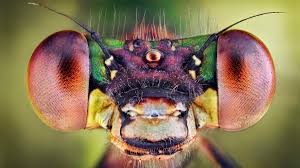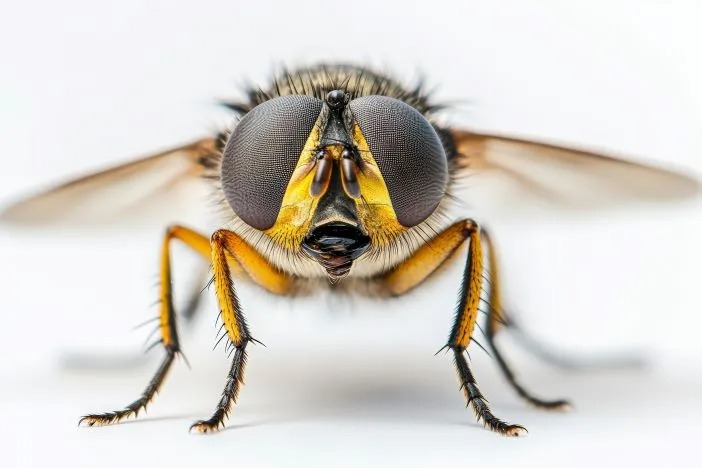Researchers in South Korea have unveiled an innovative high-speed camera inspired by the unique structure of insect eyes. This development could revolutionize various fields, including medical imaging, surveillance, and scientific research. The camera, which takes advantage of the remarkable characteristics found in the eyes of insects, promises to deliver unprecedented imaging capabilities, allowing for a deeper understanding of high-speed phenomena that were previously difficult to capture. By mimicking the complex design of compound eyes, this breakthrough could reshape industries and lead to advancements in a wide range of applications.

Insects have long been admired for their incredible ability to perceive the world around them. Their compound eyes, which consist of thousands of individual lenses, provide a nearly panoramic view of their surroundings. These eyes enable insects to detect rapid movements, making them exceptionally adept at avoiding predators or catching prey. Researchers have studied the anatomy and functionality of these eyes for years, trying to replicate their efficiency in various technological applications. Now, South Korean scientists have managed to translate this natural design into a high-speed camera that can capture fast-moving objects with remarkable precision.
One of the key features of the insect-inspired camera is its ability to capture extremely fast movements. Traditional high-speed cameras, which are commonly used in scientific research, medical imaging, and industrial applications, often struggle to capture events that occur in microseconds. These cameras typically rely on complex setups and expensive equipment to achieve high frame rates. However, the new camera, designed based on insect eyes, achieves high-speed imaging without the need for expensive hardware or complex setups. This makes it more accessible and affordable for a broader range of applications, from educational use to commercial endeavors.
The breakthrough camera operates by using a series of tiny lenses arranged in a way that mimics the structure of a compound eye. Each individual lens focuses on a small portion of the scene, and the combined input from all the lenses creates a cohesive image. This setup allows for a wide field of view and an ability to track fast-moving objects across a large area. The design of the camera also mimics the way insects process visual information, enabling it to capture rapid motion with greater accuracy and clarity than traditional high-speed cameras.
The impact of this technology could be profound across several industries. In medical imaging, for example, the ability to capture high-speed events could improve the study of physiological processes that happen in real-time, such as blood flow or neural activity. This could lead to better diagnostic tools and more precise monitoring of patients. Additionally, the camera’s ability to capture fast-moving phenomena could be invaluable in scientific research, where studying rapid processes is often critical to understanding complex systems.
In surveillance and security, the camera could provide more effective monitoring of high-speed events, such as tracking moving vehicles or monitoring crowds in real-time. This could enhance the capabilities of security systems, making it easier to detect suspicious activity or respond quickly to emergencies. The wide field of view provided by the insect-inspired design could also improve surveillance coverage, reducing blind spots and increasing the overall effectiveness of monitoring systems.
The potential applications for this high-speed camera are vast and diverse. For example, in the field of robotics, the camera could help improve the vision systems of robots, enabling them to detect and react to fast-moving objects with greater precision. This could lead to advancements in autonomous vehicles, where detecting and responding to rapid changes in the environment is crucial for safe operation. The camera could also play a role in the development of drones, where its ability to capture fast-moving objects could enhance their ability to navigate complex environments or perform high-speed maneuvers.
Furthermore, this camera could play a pivotal role in the field of sports science. The ability to capture high-speed movements with clarity could lead to more detailed analysis of athletes’ performance, helping coaches and trainers identify areas for improvement and optimize training regimens. By capturing the subtleties of fast movements, the camera could also provide valuable insights into the mechanics of sports such as athletics, motorsports, and even esports, where precision and speed are key factors in success.
In manufacturing and industrial applications, the high-speed camera could be used to monitor processes that involve rapid motion, such as assembly lines or machinery operations. By providing real-time insights into these processes, it could help identify potential issues before they become major problems, improving efficiency and reducing downtime. In quality control, the camera could be used to inspect products at high speeds, detecting defects or inconsistencies that might be missed by traditional inspection methods.
As with any breakthrough technology, there are challenges that need to be addressed before the insect-inspired high-speed camera can be widely adopted. One of the main challenges is ensuring that the camera can maintain its performance across various environments. While the technology has shown promise in controlled lab settings, further testing is needed to determine how well it performs in real-world conditions. This will be critical for applications in industries such as medical imaging or surveillance, where reliability is paramount.
Another challenge is the integration of this technology into existing systems. While the camera offers a significant advancement in imaging technology, it will need to be compatible with the various software and hardware platforms currently used in industries like medical imaging, robotics, and security. Researchers and engineers will need to work on creating seamless integration solutions that allow the camera to be easily incorporated into existing workflows and infrastructure.
Despite these challenges, the potential benefits of the insect-inspired high-speed camera are immense. If the technology can be perfected and scaled for widespread use, it could open up new possibilities for high-speed imaging in a wide range of industries. By providing a more affordable and accessible alternative to traditional high-speed cameras, it could democratize the use of this technology, allowing more organizations to take advantage of its capabilities.
The development of this camera represents a significant step forward in the field of imaging technology, demonstrating the power of biomimicry in solving complex engineering challenges. By looking to nature for inspiration, researchers have been able to create a camera that mimics the remarkable capabilities of insect eyes, offering a new way to capture fast-moving events with unprecedented accuracy. This breakthrough could lead to a new era of high-speed imaging, with far-reaching implications for industries ranging from medicine to security to robotics.
As this technology continues to evolve, it will be interesting to see how it shapes the future of imaging and what new applications emerge as a result. Whether in the fields of healthcare, sports, security, or industry, the insect-inspired high-speed camera is poised to make a lasting impact. For anyone involved in fields that require high-speed imaging, this development represents an exciting glimpse into the future of technology and its potential to transform industries. The future of imaging may very well be shaped by the innovative thinking and research coming out of South Korea, and the possibilities are only beginning to be explored.










Add Comment